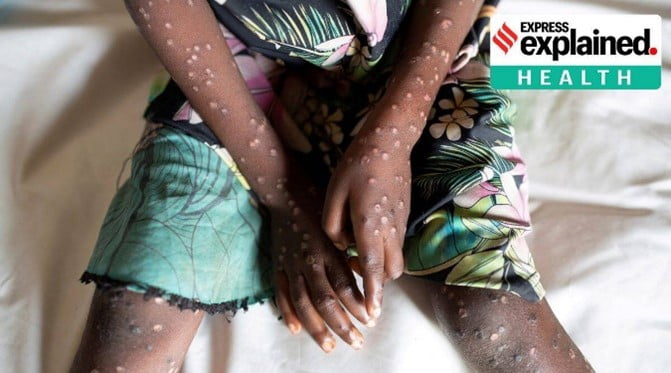Governance
Context: The World Health Organisation (WHO) recently announced that it would start using the term “mpox” for monkeypox, which has infected about 80,000 people in the first major outbreak of the viral disease outside Africa that began early this summer. The disease spread mainly in the Americas including the United States and Europe, primarily among men who have sex with men (MSM).
About Mpox:

- It is a viral zoonotic disease that occurs primarily in tropical rainforest areas of Central and West Africa.
- Caused by monkeypox virus, a member of the Orthopoxvirus genus in the family Poxviridae.
- The clinical presentation of monkeypox resembles that of smallpox, a related orthopoxvirus infection which was declared eradicated worldwide in 1980.
Symptoms:
- Fever
- Rash and swollen lymph nodes
- Headaches and nausea
Transmission:
- Mostly transmitted to people from wild animals such as rodents and primates.
- Human-to-human transmission also occurs.
- Monkeypox virus is transmitted from one person to another by contact with lesions, body fluids, respiratory droplets and contaminated materials such as bedding.
Outbreaks:
- The first case of monkeypox was reported in 1958 in monkeys and in humans in 1970 in the western Africa.
- Nigeria witnessed the biggest outbreak of the disease in 2017.
- Thereafter, the disease has been reported in many countries including the USA, Singapore, UK.
Difference from smallpox:
- The main difference between symptoms of smallpox and monkeypox is that the latter causes lymph nodes to swell (lymphadenopathy) while smallpox does not.
Present Cases:
- The majority of reported cases of monkeypox currently are in males, and most of these cases occur among males who identified themselves as gay, bisexual and other men who have sex with men (MSM), in urban areas, and are clustered in social and sexual networks.
Source: Indian Express
Previous Year Question
Q.1) Consider the following diseases:
- Diphtheria
- Chickenpox
- Smallpox
Which of the above diseases has/have been eradicated in India? (2014)
- 1 and 2 only
- 3 only
- 1, 2 and 3
- None














